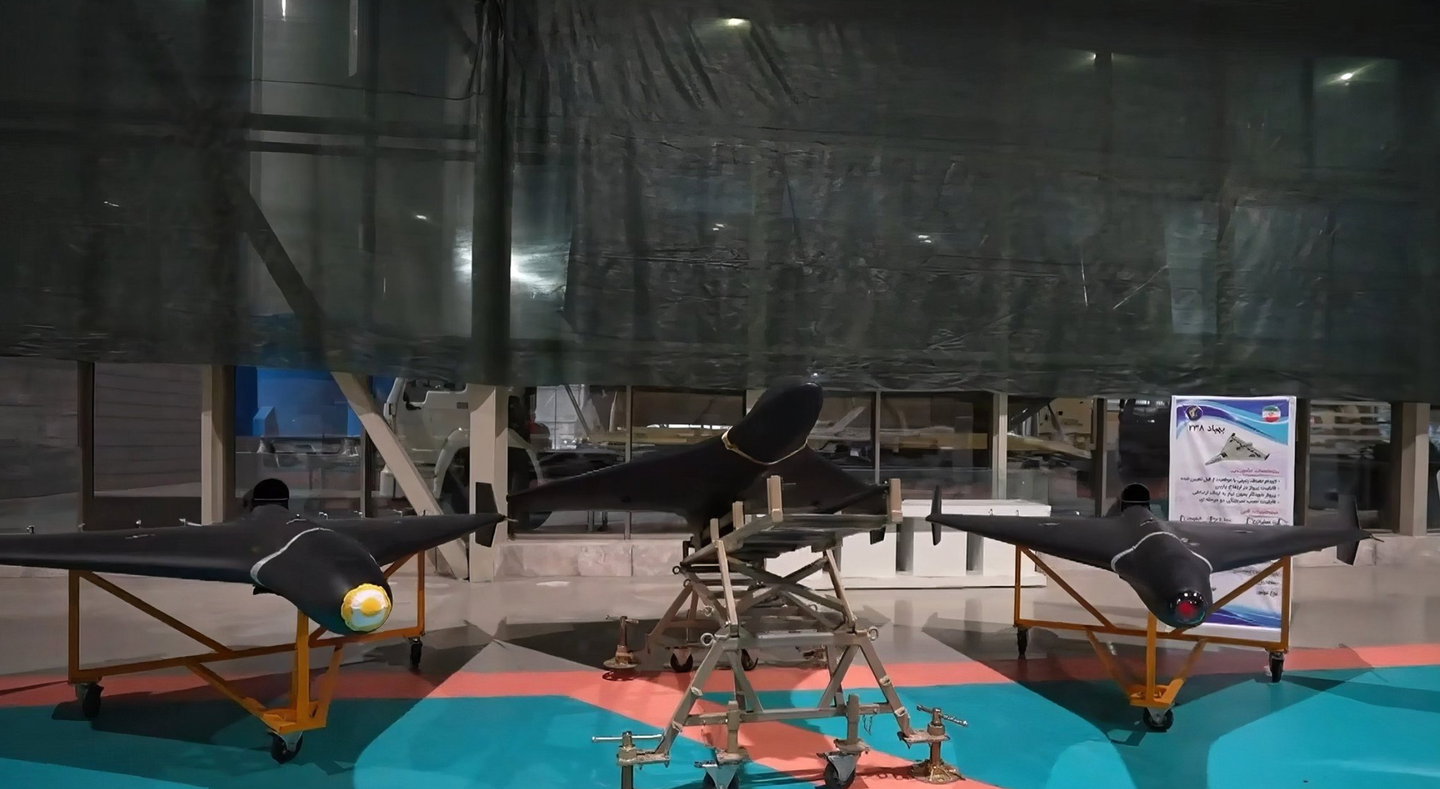A high-ranking Russian military official has claimed that Moscow has commenced production of an upgraded version of the Shahed 136 or Geranium 2, now powered by a jet engine.
Akash Missile: Armenia Emerges Prime Contender As BDL Order Book Shows Export Order For Indian SAMs
The Shahed, colloquially called the “kamikaze drone” and designated as the Geran-2 or Geranium 2 in Russian terminology, is categorized as a one-way attack unmanned aerial vehicle (OWA UAV).
Moscow has heavily employed this kamikaze drone in operations against Ukrainian targets, specifically causing substantial harm to civilian infrastructure. There are now indications that Russia is actively enhancing the lethality of this drone, suggesting an ongoing effort to augment its capabilities.
During a recent interview with Sputnik TV, an honored military pilot of Russia, Major General Vladimir Popov, gave insights into the advancements of the Geranium drone.
He pointed out that in its earlier iteration, equipped with first-generation piston engines, the Geranium’s speed was limited to a range of 180-200 km per hour with a capability of up to 300 km per hour in a dive.
However, thanks to recent technological enhancements, the current iteration of the Geranium boasts a significantly increased speed, reaching an impressive range of 450-600 km per hour with a maximum capability of up to 800 km per hour in a dive.
According to the Russian military officer, the initial configuration featured either electric engines or internal combustion engines, each boasting a power of approximately 50 horsepower.
The decision to enhance the speed of the Geranium is strategically significant as it diminishes the enemy’s capacity to counter the aircraft effectively.
Furthermore, the upgraded drones now demonstrate improved precision in approaching targets, attributable to their heightened speed and the integration of the GLONASS system.
Jet-Powered Shahed Drone
The latest disclosure comes nearly one month after Iran officially unveiled an updated version of its infamous Shahed “kamikaze drone,” featuring a propulsion system transition from the previous piston-propeller arrangement to a more advanced jet engine.
Iran’s new drone, Shahed-238, was showcased at the Iranian Ashura Aerospace University of Science & Technology in Tehran on November 19.
The new UAV, available in three variants, features the Toloue-10 micro-turbojet 896 engine, each equipped with distinct guidance systems. The standard model utilizes a GPS/GLONASS-based inertial guidance system akin to the Shahed-136.
The second version has an infrared system that targets “hot” objects, such as military vehicles. In contrast, the third variant integrates a radar detection system to target air defense systems and other radar installations.
Although specific details about the specifications of the jet-powered Kamikaze drone were not provided, the adoption of jet propulsion ensures significantly higher speed and quicker transit times to targets.

This speed advantage becomes crucial when dealing with time-sensitive targets. However, introducing a jet engine may impact the drone’s range unless additional fuel capacity has been added to compensate for this change.
Furthermore, the jet-powered Shahed drone, anticipated to be more expensive than its piston-engine counterparts, may relinquish the cost advantage that has traditionally been one of its strengths.
Yet, despite the potential increase in cost, the jet-powered drone is expected to remain a more affordable option than cruise missiles. This affordability factor makes it feasible for mass attacks on selected targets.
With Russia extensively deploying earlier propeller-driven Shahed versions in Ukraine, the introduction of this new drone modification has previously raised concerns within the Ukrainian Air Force.
Ignat mentioned, “Now there is news that Iran is producing a new Shahed with a jet engine, with different radar guidance. There are different options… It is painted in a matte black color, which can also complicate the work of visual detection. I don’t know if Russia will receive them, but these countries have such experience.”

Since their initial deployment, the recovered Iranian-origin drones have exhibited discernible technical modifications.
Some of these alterations seem deliberate and part of the design process. In contrast, others appear to be adaptations compelled by the manufacturer’s need to compensate for components restricted by Western sanctions.
That being said, the production of a new jet-powered Shahed 238 drone by Iran has raised questions about its potential supply to Russia. It remains unclear whether Iran will directly provide these drones to Russia or if Moscow will domestically produce them, adhering to the Iranian design.
- Contact the author at ashishmichel(at)gmail.com
- Follow EurAsian Times on Google News




